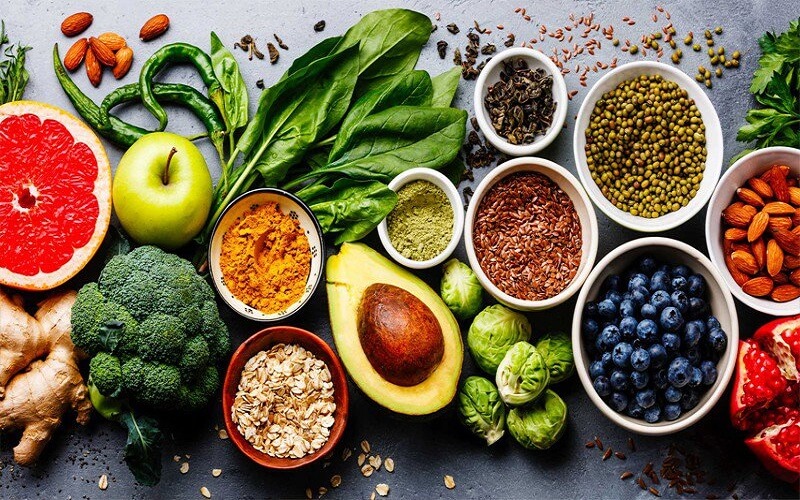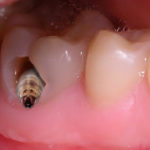Type 1 diabetes is a concerning condition, though less common than Type 2. It requires a healthy and scientific diet to manage blood sugar levels. In this article, we will guide you on creating a Type 1 diabetes diet plan from the comfort of your home.
1 Causes of Type 1 Diabetes
The exact cause of Type 1 diabetes is currently unknown. Scientists have found that in most cases, the body’s immune system attacks the insulin-producing cells in the pancreas by mistaking them for harmful bacteria.
 The exact cause of Type 1 diabetes remains unclear.
The exact cause of Type 1 diabetes remains unclear.
As a result, the body has little to no insulin, causing sugar to accumulate in the blood and leading to high blood sugar levels, resulting in diabetes.
Type 1 diabetes is also believed to be influenced by genetic and environmental factors.
2 Foods to Eat and Avoid with Type 1 Diabetes
Foods to Eat
Starchy Foods
 Patients should consume whole grains and unrefined bread.
Patients should consume whole grains and unrefined bread.
Type 1 diabetics should eat whole grains and unrefined bread, such as black bread, brown rice, oats, and barley. The recommended starch intake is around 50-60% of a typical person’s diet.
It is best to limit fried and stir-fried starchy foods. Boiling or grilling are healthier alternatives.
You can learn more about diabetes management to prevent the condition from worsening and achieve better treatment outcomes.
Protein-rich Foods
Protein (chất đạm) is essential for the body, and diabetics should aim for 20-30% or 12-20% of their daily calories from protein. Good sources include skinless chicken, turkey, fish, low-fat dairy products, and beans like kidney beans, black beans, and soy products.
 Avoid chicken and duck skin due to high cholesterol content.
Avoid chicken and duck skin due to high cholesterol content.
Avoid chicken and duck skin, as they are high in cholesterol. Also, limit red meat, organ meats, and egg yolks.
For protein-rich foods, opt for boiling, stewing, or grilling instead of frying or stir-frying.
High-fiber Foods
Fruits, vegetables, and legumes are excellent sources of fiber. Experts recommend that Type 1 diabetics consume about 400 grams of fresh fruits and vegetables daily.
 Fruits, vegetables, and legumes are high in fiber.
Fruits, vegetables, and legumes are high in fiber.
Fiber helps with anti-aging, stabilizes blood sugar, and promotes overall health. However, diabetics should avoid dried fruits and sweet fruits due to their high sugar content.
Foods to Avoid
Fatty Foods
Type 1 diabetics should limit their intake of high-fat foods. Daily cholesterol consumption should be below 300mg.
 Limit consumption of fatty foods.
Limit consumption of fatty foods.
However, chất béo is also essential for the body, so consider using plant-based oils like olive, canola, peanut, and sunflower oil.
Avoid frying or stir-frying fatty foods. It is best for Type 1 diabetics to minimize or use oil only when necessary.
Sugary and Stimulant Foods
Type 1 diabetics should completely avoid sugary foods and drinks, including candy, cookies, cake, sugar-sweetened beverages, and soda. These often contain artificial sweeteners that can harm your health and cause blood sugar spikes.
 Avoid sugary treats like candy and cookies.
Avoid sugary treats like candy and cookies.
Instead, use non-caloric sweeteners approved by the US Food and Drug Administration (FDA), such as aspartame, saccharin, and sucralose. Always consult a doctor or dietitian for advice on consuming sweeteners.
3 Healthy Eating Habits for Type 1 Diabetics
 Eat small meals to maintain stable blood sugar levels.
Eat small meals to maintain stable blood sugar levels.
In addition to choosing the right foods, healthy eating habits are crucial for managing Type 1 diabetes. Here are some tips to incorporate into your diet:
- Select foods that help maintain stable blood sugar levels.
- Eat small, frequent meals to prevent blood sugar spikes after eating.
- Don’t skip breakfast, as it provides the necessary energy and blood sugar boost after a night’s rest.
- Combine your diet with regular health check-ups and medication to stabilize blood sugar levels effectively.
This article has provided insights into Type 1 diabetes, focusing on nutrition and diet. Understanding this information and adopting a healthy diet can help prevent diabetes and improve the lives of those living with the condition. Share this knowledge with your loved ones to raise awareness and promote healthier lifestyles.
Source: Long Chau Pharmacy
Exploring the Effectiveness of Exercise for Creating Facial Slimming
Do you want to slim down your face? Running can be a great way to support weight loss and potentially help you reduce facial fat. In this article, we explore the topic of how running can help you improve your health, achieve weight loss goals, and result in a slimmer face. Read on to find out more about how running can help you achieve the facial look you desire.






































